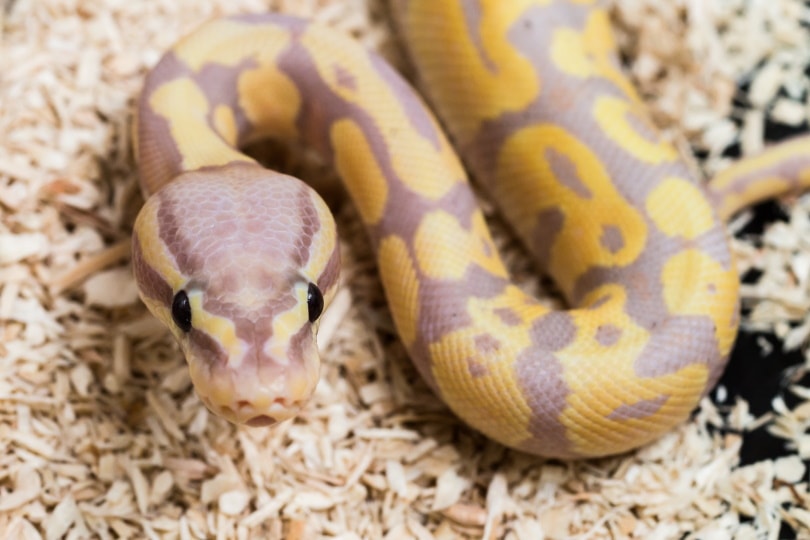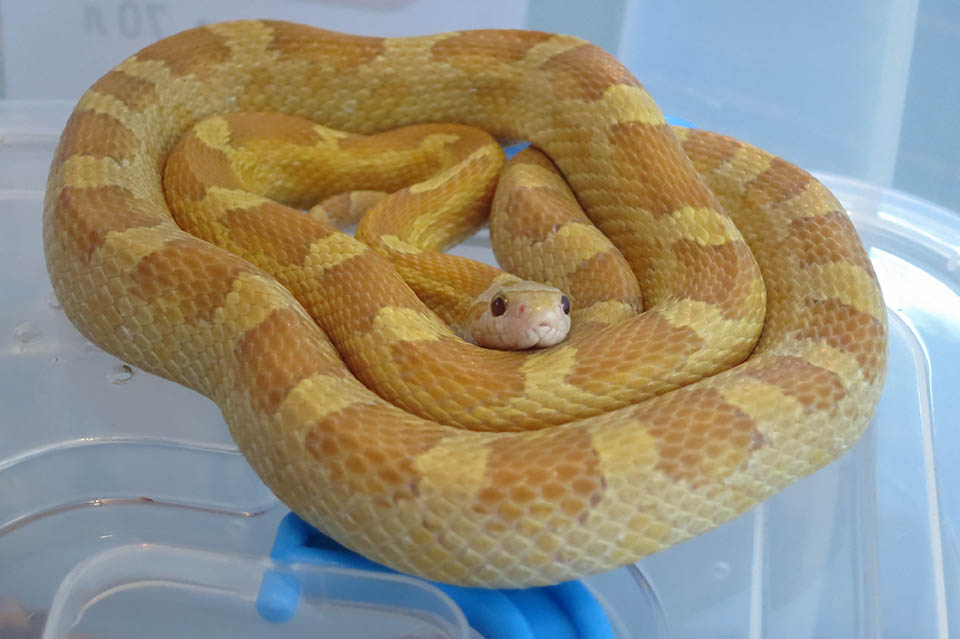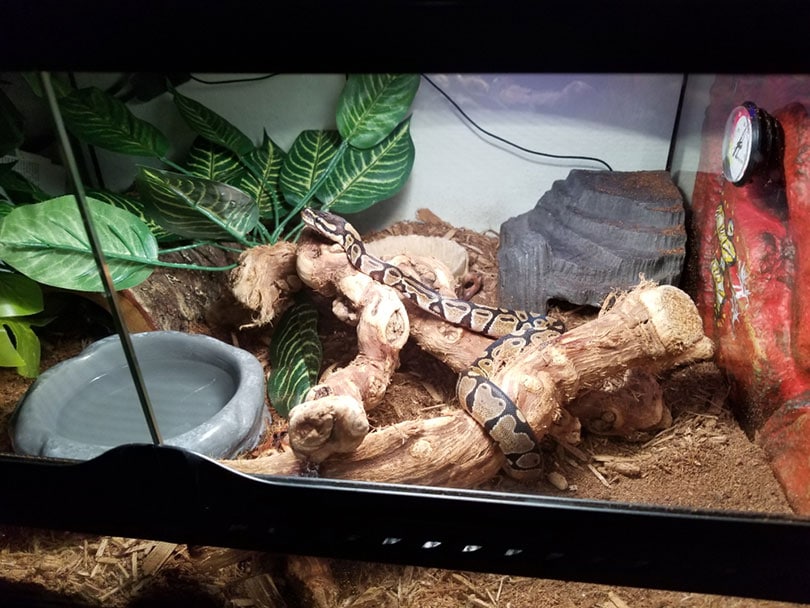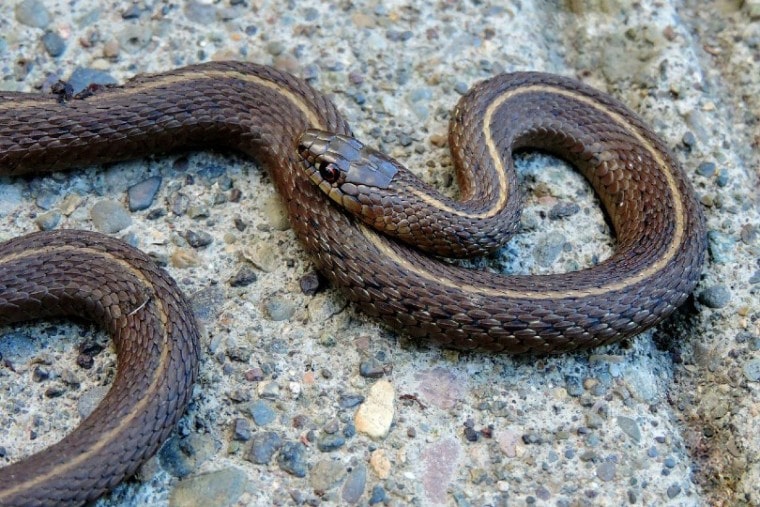
The garter snake is a relatively harmless snake that you can find almost anywhere in America. Even if it isn’t a popular snake to purchase at the pet store, it’s a common pet of young children who catch it around the house. You can also find breeders willing to supply you with one.
Many species of garter snakes are quite colorful and attractive. If you are interested in properly caring for one, we are here to help. This short guide details the many considerations of raising a garter snake, including what to feed it and how to house it.
Garter Snake Facts

Are Garter Snakes Good Pets?
Garter snakes make great pets for youngsters who are inexperienced in raising pets. They are inexpensive, and you can usually find them around your home when the temperature climbs into the 70s (Fahrenheit). It’s a great entry-level reptile for anyone interested in lizards and snakes, and it can get fairly large, with most species reaching more than 20 inches long. It’s easy to feed and does not require you to feed it mice, and there are more than 30 species. However, garters are wiggly when held, can discharge a foul liquid when you pick them up, and create more fecal waste than other snake breeds, meaning you will need to clean the cage more frequently.
Where Can I Get a Garter Snake?
The easiest way to get a garter snake is to search around your home when the weather first reaches the 70s (Fahrenheit) after a cold season. It will usually hide under porches or near fences. You can also find breeders that might be able to get you one, though they might also be wild caught, so be careful how much you pay.
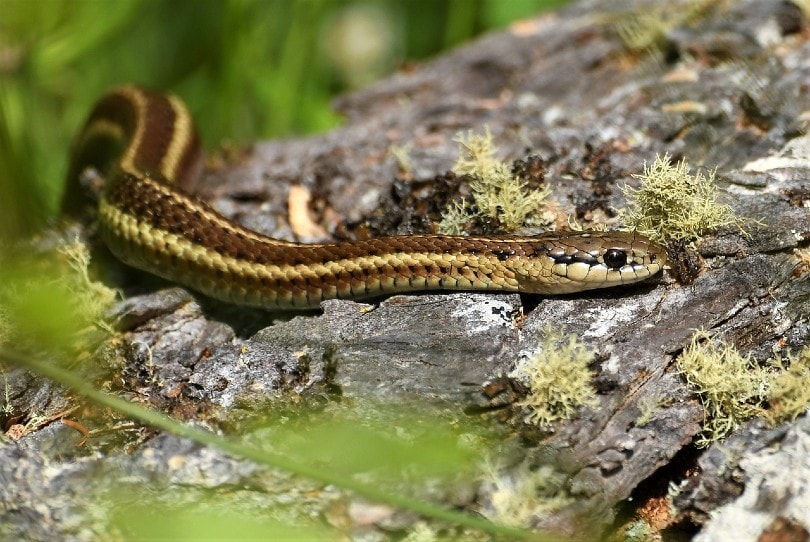
How Much Does It Cost to Own a Garter Snake?
If you purchase this snake from a breeder, it will likely cost you around $10. A garter snake is fairly inexpensive to maintain. You will need a 10–15-gallon glass aquarium with a tightly fitting screen lid to keep it in. These aquariums typically cost around $100. Inside the cage, you will need a hide box, so the snake has a place to go to feel more secure. You can build one or purchase it for about $10.
Your garter snake will also require a fresh supply of water in a small bowl or dish so it can stay hydrated. The total cost of your garter snake habitat should be no more than $150. Your snake will also require heating lights, which will raise your electric bill a few dollars every month.
What Kind of Home Does My Garter Snake Need?
Inside the 10–15-gallon aquarium, you will need a substrate. We recommend paper towels because garter snakes mess up their cage quickly, and they will require frequent cleaning. Your garter snake will also require a warm environment, so you will need to heat the aquarium with lights. It does not require much in the way of furniture, and as long as it has water, warmth, and a place to hide, it should be happy. A cluttered environment will be harder to keep clean.
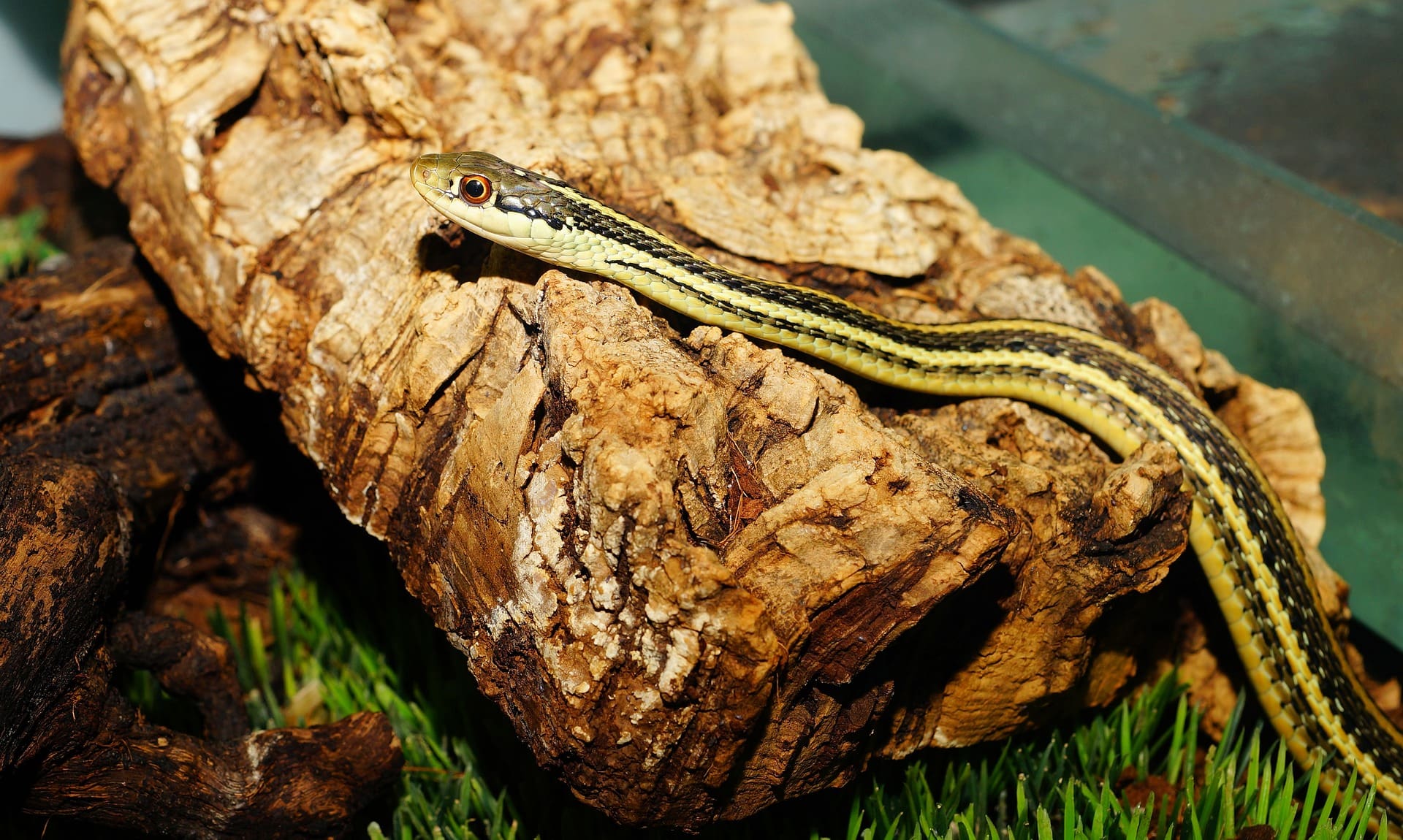
What Should I Feed My Garter Snake?
Garter snakes typically eat frogs, tadpoles, and earthworms in the wild. The best solution is to feed them earthworms coated in vitamins to get them the proper nutrition in captivity. Earthworms are easy to find around your home after it rains, and you can also find them for sale at most fishing stores where they sell them as bait. Wash the worms to get the dirt off before coating them with vitamins and serving them to your snake. Vitamin B1 is an essential vitamin that you will need to provide.
How Do I Take Care of My Garter Snake?
Your garter snake will not need a lot of care once you properly set up the tank and prepare the food. You can occasionally pick it up for some bonding time, but you will find that these snakes squirm quite a bit, defecate, and spray a foul-smelling liquid when you do. If it falls from your hands, it can be injured. Usually, keeping the water fresh and feeding it dinner is all you will need to do to keep your pet healthy, happy, and safe.
Your garter will shed its skin a few times a year and will stop eating and can become moody until the process is complete. It will shed the skin by moving around its habitat, working it loose. You can help by raising the humidity in the tank with a humidifier. Small rough rocks can also help the snake break free of its old skin. Skin that builds up around the eyes can cause blindness. You might need to help by gently pulling at the skin with your fingers.
- See Also: Are There Snakes in New Zealand?
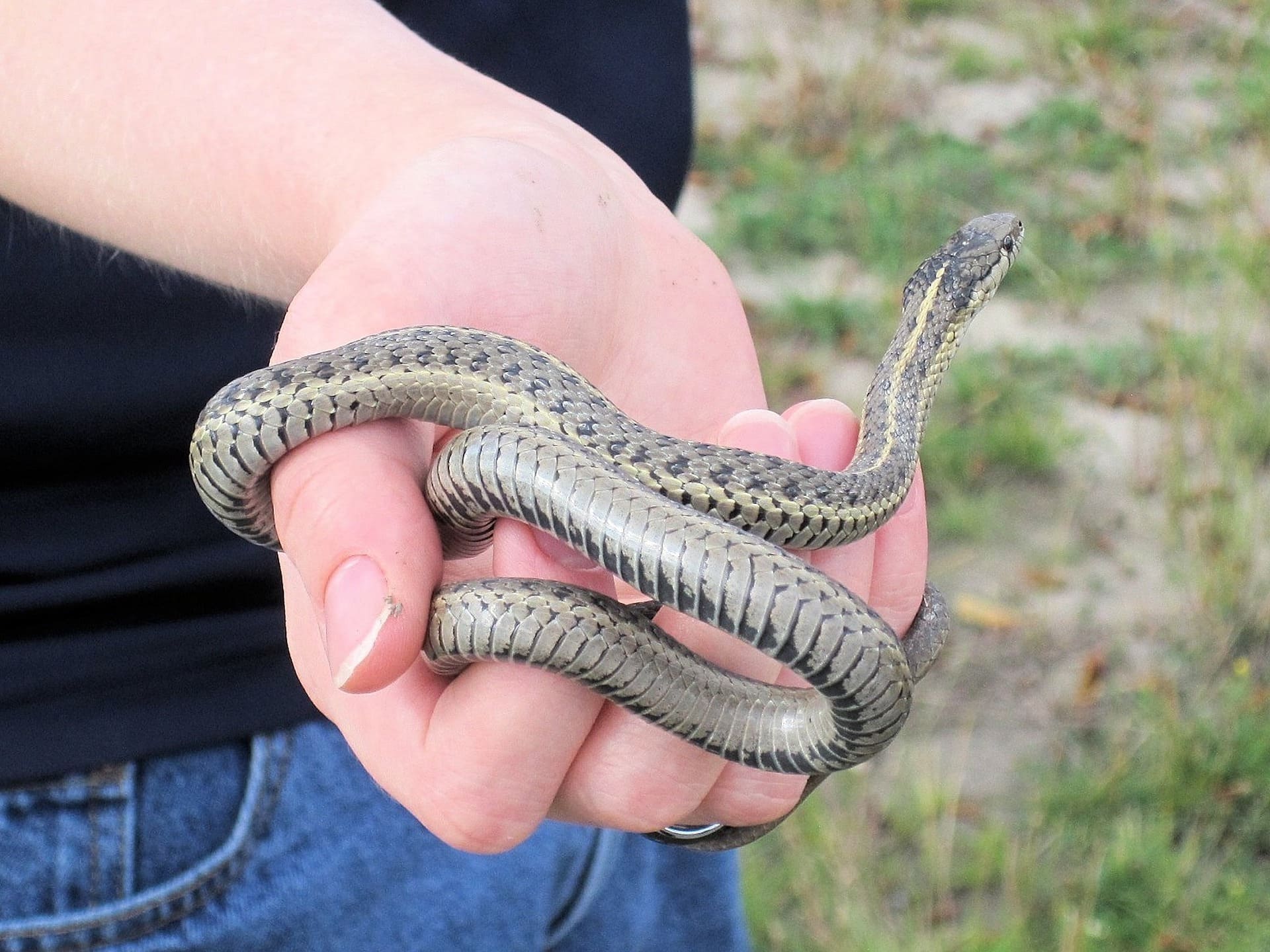
How Do I Know If My Garter Snake Is Sick?
Snakes can take a long time to show signs of illness, so you must be vigilant about observing your pet to tell when its health changes. Sick snakes will often become lethargic and move even slower than normal. It may lose the will to eat and attempt to bury itself in the substrate. Snakes that refuse to eat will become dehydrated with sunken eyes and bits of unshed skin. You may also notice a pink or reddish hue to the skin. If you notice your snake lying limp instead of recoiling away from you or blowing bubbles from its mouth and nose, it’s time to take it to the vet to have it looked over.
The most common health issue with snakes is incomplete shedding, often caused by an environment that is too dry combined with dehydration due to illness or lack of water. It can cause the skin to stick to the eyes, face, and other parts of the body. The best way to help is to increase the humidity in the tank and carefully try to help pull off the skin with your fingers.
Final Thoughts
We hope that this guide has helped you understand your garter snake better and that you now have the knowledge to create a good habitat for your snake. Properly setting up its habitat is surprisingly easy and only requires a few components. Don’t forget to add at least one hide that your snake can use to feel more secure, and get a good heat lamp and thermometer, so you know what the temperature is at all times and it remains consistent day after day. A humidifier, or one of the many reptile humidity makers available, will increase the moisture and make the snake’s skin easier to shed, minimizing the time required to complete the uncomfortable process for your snake while making sure there is less skin left behind.
Featured Image Credit: Pixabay




